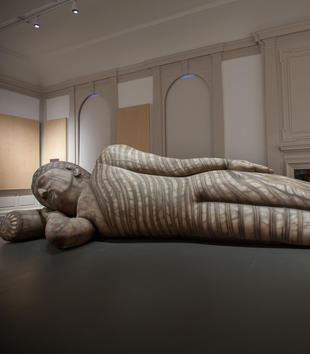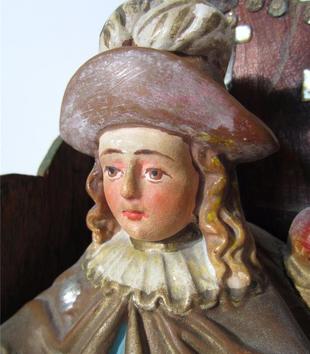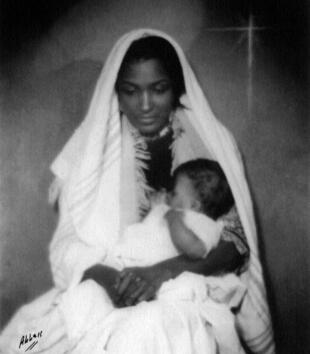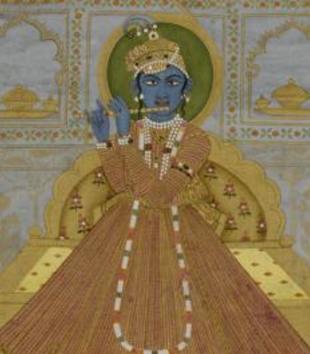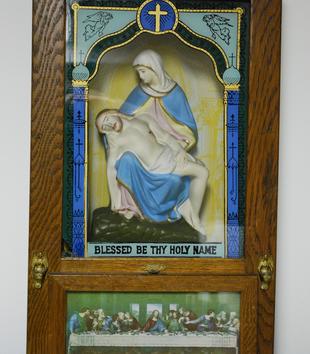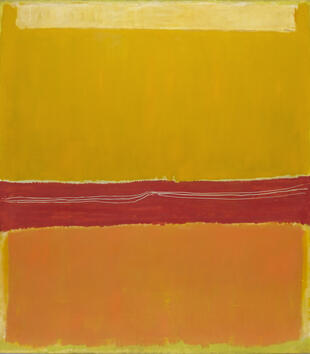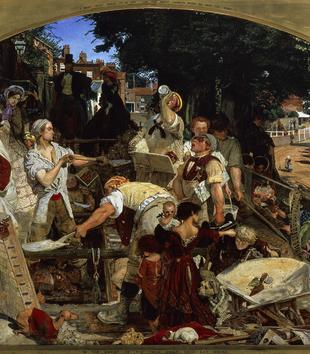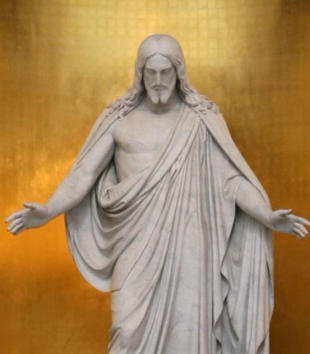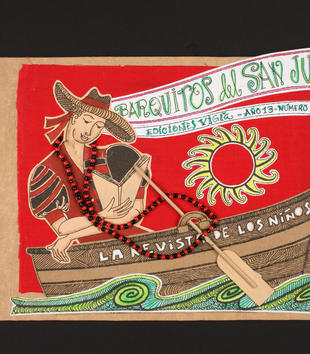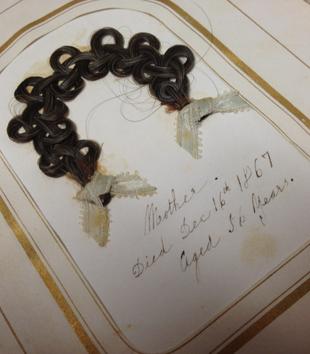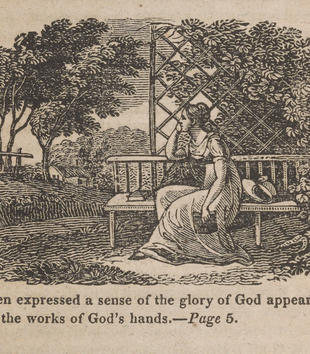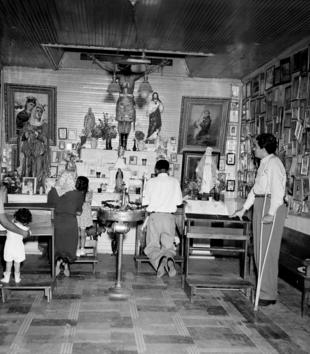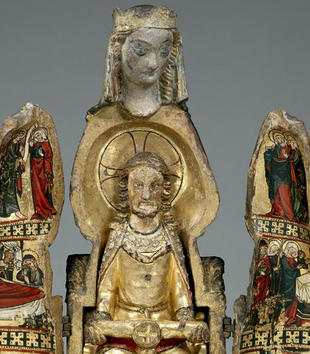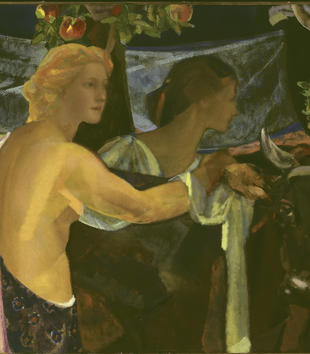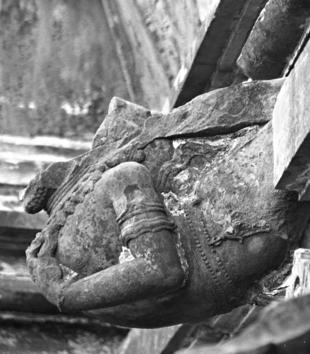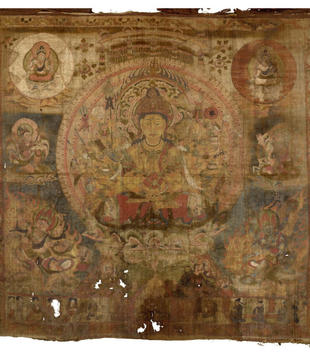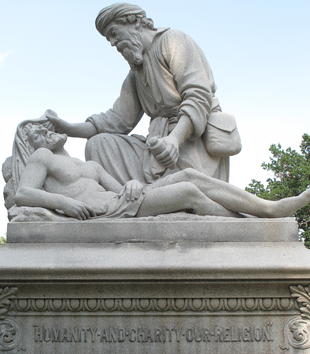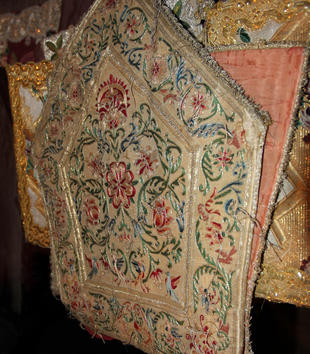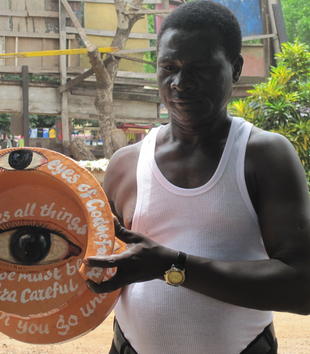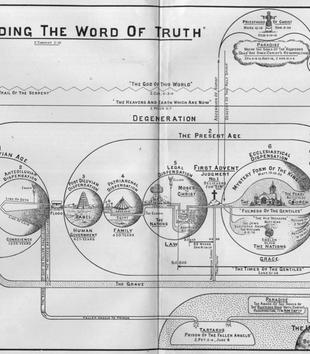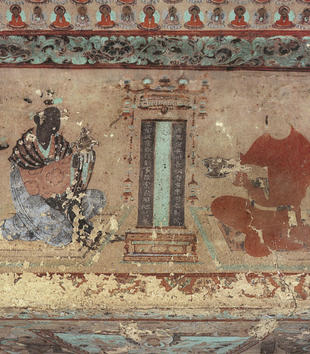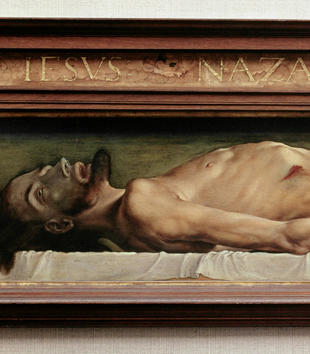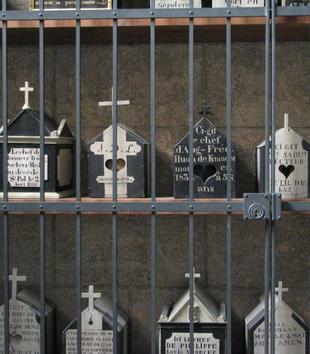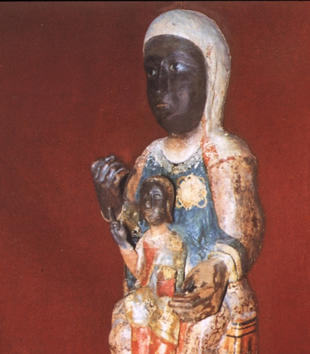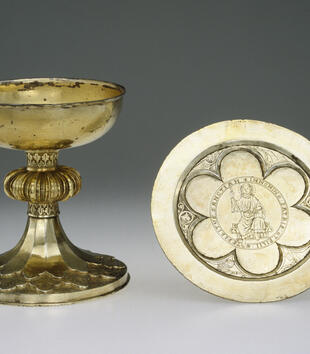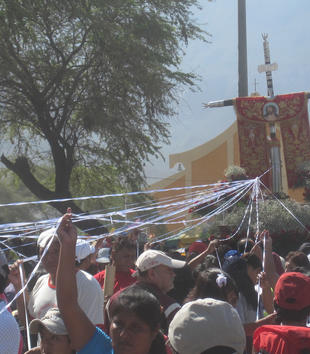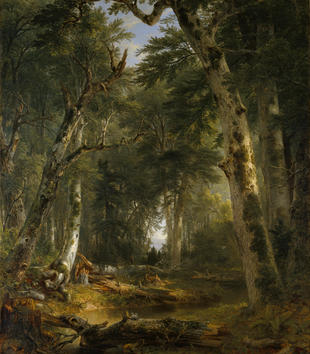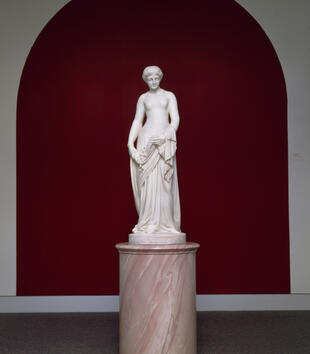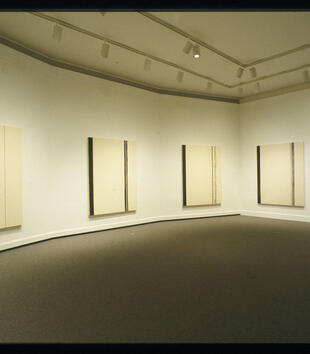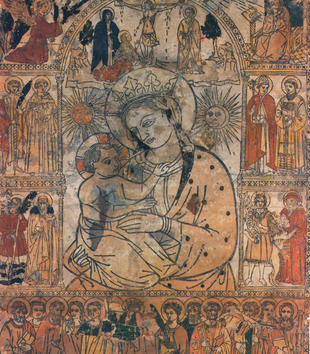You are here
Conversations: An Online Journal of the Center for the Study of Material and Visual Cultures of Religion
MAVCOR began publishing Conversations: An Online Journal of the Center for the Study of Material and Visual Cultures of Religion in 2014. In 2017 we selected a new name, MAVCOR Journal. Articles published prior to 2017 are considered part of Conversations and are listed as such under Volumes in the MAVCOR Journal menu.
-
Unlike its solid stone predecessor, deSoto’s work, made from painted polyethylene cloth, is hollow, filled only by air from a fan that keeps the sculpture inflated. The resemblance to the reclining Buddha is nonetheless remarkable, from the curls of hair to the folds of the robe, the one exception being that deSoto superimposed his own facial features, complete with goatee, on this Buddha.
-
In the second half of the nineteenth century, in Europe and the United States, chalkware accomplished for three-dimensional devotional objects what chromolithography managed for images in two dimensions.
-
During the Harlem Renaissance, mother and child portraits and figure studies were especially popular in the African American media, signaling the importance placed on motherhood and the nurturing of future generations.
-
This conversation about spirituality happened in the home of Aparajita Guha in Rexford, New York, on June 20, 2012. Guha, a practicing Hindu, is a family friend of Ashley Makar, who is a practicing Christian.
-
Among the material items that might occupy the pre-Vatican II American Catholic home, regardless for the most part of the occupant’s ethnicity or familial nation of origin, the last rites cabinet or viaticum (Latin for “supply of provisions for a journey”) asserted a powerful daily and nightly presence.
-
Strong, gestural markings in the central red band distinguish this painting from Rothko’s other mature works. This anomaly consists of long, gently undulating lines formed by gouging the surface of the paint all the way to the canvas before it dried. Straining out from a central point, the horizontal lines contrast sharply with the fuzzy, indeterminate edges of the other elements of the painting.
-
Ford Madox Brown’s allegory of labor in all its forms is the most ambitious Pre-Raphaelite painting of modern life and a profound meditation on the relationship between art, religion, and labor in Victorian society.
-
The internationally famous Danish sculptor Bertel Thorvaldsen (1789–1838) was asked to produce a series of colossal statues of Christ, John the Baptist, and the apostles for the new Neoclassical Vor Frue Kirke of Denmark. Of these, Christus (Christ) has become best-known. Copies of the sculpture, often true to size or even larger, can be found around the world.
-
Ashley Makar spoke with Rabbi Jordie Gerson on October 26, 2010 at Yale University’s Joseph Slifka Center for Jewish Life. Rabbi Jordie Gerson currently works as the Assistant Director and Campus Rabbi at University of Vermont Hillel.
-
Rolando Estévez Jordán, a visual artist, and Alfredo Zaldívar, a poet, co-founded Cuba’s Ediciones Vigía (Watchtower Editions) in 1985 to create an open forum for writers, musicians, and artists.
-
What photograph albums teach us about nineteenth-century viewing habits is that the reach of religion extended beyond compositionally “religious” subjects. Modes of beholding were often forms of religious practice that did not require a regulated rift between sacred and secular.
-
That “Protestants don’t have pictures” remains a common generalization. Yet in the early nineteenth century, nothing could be further from the truth. Protestant publishers like the nonsectarian American Tract Society (ATS) lavishly decorated their tracts with small but expressive printed illustrations.
-
No exact date is known for the founding in San Antonio, Texas, of the Capilla de Nuestro Señor de los Milagros (Chapel of the Lord of Miracles), or Capilla de los Milagros, as it is sometimes called. Visitors to the shrine and its central Christ image offer both their orations and material expressions of prayer.
-
This object is an example of a type of small-scale Christian moveable-part medieval sculpture called a Vierge Ouvrante (“Opening Virgin”).
-
Each year, certain special religious images are ceremonially brought from Mexico and Central America to visit Catholic devotional communities in Southern California. These devotional statues of Catholic saints are “imágenes peregrinas,” pilgrim or traveling images.
-
Two maidens, one bright and one shadowy, lead an ox through a curiously dense, shallow, and cubistically-fragmented woodland, heading (one presumes) through the titular sacramental trees and towards an uncertain destination.
-
Hovering above the central courtyard of a Hindu monastery at the rural central-Indian village of Chandrehe was once a set of finely sculpted flying celestials, known within their original, tenth-century context as gandharvas, heavenly singers in the court of the gods, or vidya-dharas, meaning “carriers of truth.”
-
Avalokiteshvara, one of the most important bodhisattvas in Buddhism, was popularly known as the “perceiver of the world’s cries.” Bodhisattvas, meaning literally “enlightened beings,” were devoted, out of a deep sense of compassion, to aiding other sentient beings in their quest for enlightenment, even to the point of postponing their own entry into nirvana.
-
In the summer of 1900, Denver acquired an unusual sculpture to mark the last resting place of pioneer attorney Vincent Daniel Markham (1826-1895) and his wife Mary (ca. 1834-1893).
-
The Cathedral of Cuzco, Peru holds several liturgical ornaments from the Spanish colonial period in its treasury. Among them is a magnificent embroidered miter, the headdress worn by bishops for blessings, baptisms, and processions.
-
During a trip to Ghana in May 2010, I visited the roadside shop and atelier of painter Kwame Akoto, alias “Almighty,” a name he adopted so as to praise the power of God.
-
Clarence Larkin’s dispensationalist chart “Rightly Dividing the Word of Truth” (1920) offers a detailed schematic of biblical history. The artistic product of an individual with experience in mechanical draftsmanship, Larkin’s chart shows how events and epochs fit together like parts in a salvation machine.
-
Icons move. They cross national borders and traditional boundaries. They show up in the least expected places.
-
The integration of “secular” figures into a Buddhist cave complicates the separation established by both medieval Chinese authors and modern scholars of Buddhist art between practices of familial commemoration and religious devotion.
-
“Why, some people may lose their faith looking at that picture!” Dostoyevsky famously had his fictional character Prince Myshkin exclaim over Hans Holbein the Younger’s Dead Christ Entombed.
-
Skull boxes that both memorialized a dead individual and displayed the deceased person’s skull were made in Brittany from the eighteenth century to about 1900.
-
These glass eyes seem to look intently at the viewer, seizing the viewer’s attention. This is precisely what they are intended to do by the Shvetambar Murtipujak Jains of western India; it is also precisely why the Digambar Jains of western India strenuously object to them.
-
This Marian icon cannot be characterized as a single object as the perception of her authenticity, from which she gains her numinous power, draws on two distinct representations, one nested inside the other.
-
In 1890 two men working in the area around Dolgellau in North Wales discovered this pair of objects in a crevice between rocks. Encrusted with soil and plant matter, the objects were not at first identifiable.
-
Credited with saving the town from sure disaster, the Cross of Motupe became the centerpiece of a devotion that drew pilgrims from throughout the region, and eventually from throughout Peru.
-
In June 1840, Asher Durand wrote in his journal: “Today again is Sunday. I have declined attendance on church service, the better to indulge reflection unrestrained under the high canopy of heaven, amidst the expanse of waters—fit place to worship God and contemplate the wonders of his power.”
-
This is a Buddhist votive stele made in the sixth century in north central China. It probably stood either in the courtyard of a Buddhist monastery, or in a public place such as a market square, or at a major crossroads.
-
Given the fact that Benjamin Paul Akers was a Protestant working at a time when nativist and anti-Catholic sentiments ran high in the United States, his choice to depict a miracle performed by an Eastern European saint seems peculiar, as does the popularity of his sculpture.
-
According to the art critic Harold Rosenberg there is nothing religious about Barnett Newman’s series of fourteen roughly human-sized, black and white paintings, The Stations of the Cross: Lema Sabachtani.
-
Mary Lyman’s mourning piece served as visual and material evidence of her education, participation in mourning practices, and her religious and social formation.
-
Forlì's Madonna of the Fire is a large fifteenth-century woodcut almost twenty inches high and sixteen inches wide.
